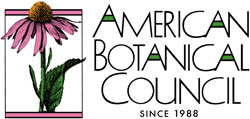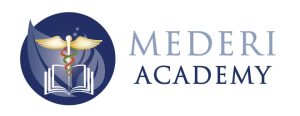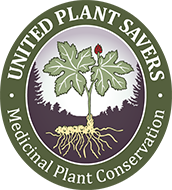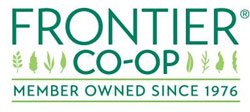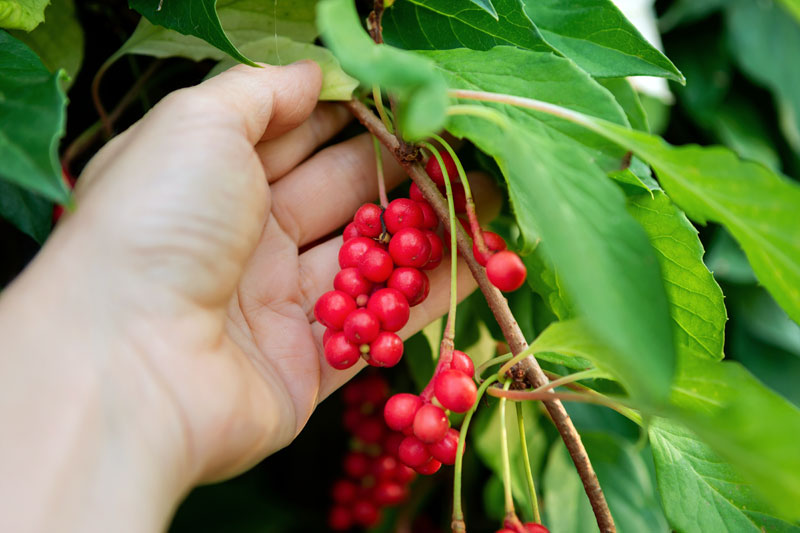
The human body is a complex and interconnected system, where various organs and systems communicate with each other to maintain homeostasis. An area of research that has gained attention in recent years is the exploration of the GI-Skin-Brain axis. This axis refers to the bidirectional communication between the gastrointestinal (GI) system, the skin, and the brain.
Increasing evidence shows that an imbalanced gut microbiome can induce inflammatory skin diseases.35 This offers a likely approach for improving skin conditions, by the modulation of the gut microbiome. Understanding the intricate connections within this axis provides valuable insights into addressing the root cause of any dysfunction that may occur here.
In the 1930’s, Drs. Stokes and Pillsbury hypothesized that emotional states, such as depression or anxiety, may affect intestinal microflora, thereby contributing to systemic inflammation. Their future studies provided evidence to support their gut-brain–skin theory.3,4 The brain is a key player in the GI-Skin-Brain axis, coordinating communication between the gut and the skin. Neurotransmitters, hormones, and immune molecules act as messengers, transmitting signals between these vital systems. Emerging evidence suggests that the gut microbiota can influence brain function and behavior through the production of neurotransmitters and the modulation of inflammation. This GI-Skin-Brain axis connection has implications for mental health, stress-related disorders, and the overall well-being of an individual.
The GI-Skin-Brain axis has been extensively studied and is recognized for its impact on mental health, mood, and cognitive function. Additionally, skin conditions may influence the gut microbiome, emphasizing the importance of considering the gut-skin axis in dermatological research and clinical practice. The gut microbiota influences immune responses and inflammation, impacting skin conditions such as acne, eczema, and psoriasis. Intestinal dysbiosis, or an imbalanced gut microbiome, has a negative impact on skin function and integrity.25 IBS and depression tend to be comorbid. Depression has been linked with an increased presence of proinflammatory cytokines.10
The behavioral effects of cytokines are linked to the activation of inflammatory signaling pathways in the brain, leading to alterations in monoamine, glutamate, and neuropeptide systems, as well as reductions in growth factors. Peripheral cytokines can enter the central nervous system, triggering the enhanced production of local inflammatory mediators like cyclooxygenase-2, prostaglandin E2, nitric oxide, cytokines, and chemokines by endothelial cells, perivascular macrophages, and microglia.6 Several studies have documented elevated levels of circulating proinflammatory cytokines, including interleukin (IL)-1, IL-6, tumor necrosis factor (TNF)-alpha, and the acute phase protein C-reactive protein in individuals diagnosed with idiopathic major depression.30
The most robust evidence exists for the use of inulin as a prebiotic. Some findings suggest that inulin induces a reduction in NF-κB levels, subsequently lowering the expression of inflammatory factors like COX2 and thereby reducing proinflammatory prostaglandins.5 In one animal study, the administration of β-glucan and inulin effectively decreased the severity of skin lesions and inflammatory responses in mice.5 In another, the pre-administration of β-glucan and inulin thwarted the advancement of atopic dermatitis (AD) by fostering the proliferation of beneficial bacteria in the gut of oxazolone OX-induced AD mice.13Additionally, the prebiotic activity of Cichorium intybus, or chicory root, has been examined quite thoroughly.2
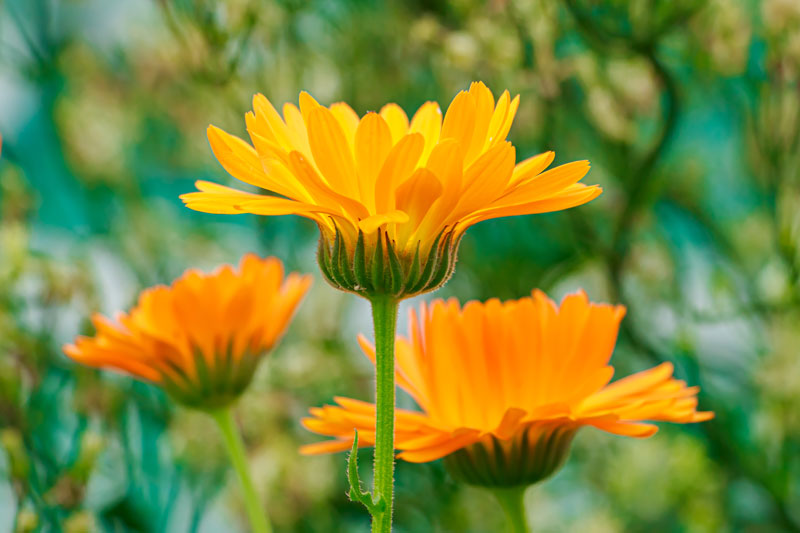
Medicinal herbs have long been recognized for their potential to positively impact the GI-Skin-Brain axis, offering a natural and holistic approach to health. Herbs such as Matricaria chamomilla, or chamomile, known for its inflammation-modulating and calming properties, may play a role in gastrointestinal health by soothing digestive discomfort and promoting a balanced gut environment. Additionally, herbs like Calendula officinalis, or calendula, and Aloe barbadensis, or aloe vera, with their skin-soothing and wound-healing attributes, can influence the skin aspect of the axis, potentially aiding in the healing of dermatological conditions.26 Calendula officinalis is such a delightful flower! These sunny yellow-orange bursts of sunshine offer a plethora of medicinal benefits. Its calming, vulnerary properties help to heal the gut and move lymph.
Plant adaptogens can restore the skin barrier and uphold skin homeostasis by modulating the skin’s HPA-like axis, impacting the oxidative stress pathway to alleviate inflammation, and regulating extracellular matrix components to sustain a dynamic equilibrium. This, in turn, facilitates the treatment of skin diseases and the preservation of a healthy skin state.19 Adaptogenic herbs like Withania somnifera, or ashwagandha, and Ocimum tenuiflorum, or holy basil, are believed to support stress resilience and balance cortisol levels, indirectly benefiting both the gut and skin by mitigating the impact of stress on these systems. The key components consist of triterpene saponins, particularly those with a tetracyclic backbone, displaying structural similarities to cortisol.19 For example, the flavonoids found in Elaeagnus rhamnoides, or sea buckthorn, and Curcuma longa, or turmeric, exhibit the capacity to impede the immune-inflammatory response in the skin of individuals with atopic dermatitis.19 The rich phytochemical profiles of these botanicals may also offer neuroprotective effects, contributing to the overall well-being of the brain. Withania somnifera is an important Ayurvedic medical herb for many therapeutic purposes including immunity and the nervous system in health and disease.40 Active chemical constituents include various alkaloids, steroidal lactones including withanolides and withaferins, and saponins.24
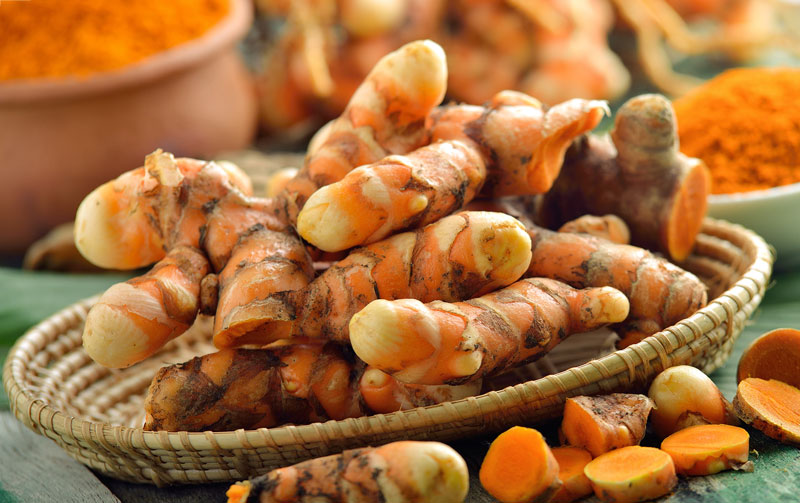
The adaptogenic actions of madecassoside and asiatic acid present in Centella asiatica, or gotu kola, can diminish mast cell infiltration and lower skin inflammation levels by suppressing the secretion of inflammatory factors like IL-23.22 Additionally, the triterpenoid saponins found in Centella asiatica, more specifically asiaticoside, has been found to have vulnerary, antibiotic, and anti-inflammatory effects on the skin.33 Asiaticoside has been documented for its wound healing properties, promoting collagen formation and angiogenesis.8 In addition to stimulating collagen synthesis in various cell types, asiaticoside has demonstrated an enhancement in the tensile strength of newly formed skin, thereby facilitating wound healing. Moreover, it has been observed to inhibit the inflammatory process that could lead to hypertrophy in scars and enhance capillary permeability.15
Numerous randomized, double-blind, placebo-controlled trials have assessed the efficacy of Panax ginseng, or Asian ginseng, and Panax quinquefolius, or American ginseng, for cognitive performance, neurotransmission modulation, memory and learning enhancement, and neuroprotection.23 Recent studies have established that ginseng root extracts have prebiotic-like effects that increase Lactobacillus and Bifidobacterium.31 Ginsenosides, a group of ginseng-specific triterpenoid saponins, has been found to contribute to this.7, 21 These ginsenosides have also shown anxiolytic and antidepressant effects in numerous animal models. This occurs due to the regulation of neurotransmitters, along with the HPA axis, and intracellular signaling pathways in the CNS. Lastly, they have been found to reduce the secretion of proinflammatory cytokines while increasing the production of anti-inflammatory cytokines.28, 36
The roots of Panax ginseng and Panax quinquefolius harbor steroidal saponins known as ginsenosides, which also seem to possess adaptogenic properties. Ginsenoside Rg5 derived from Panax ginseng demonstrates efficacy in diminishing skin inflammation and oxidative stress.19 A formulation of Panax ginseng containing 1,2-hexanediol was found to aid in preserving skin homeostasis by enhancing the skin microbiome.11 Panax ginseng and ginsenosides have demonstrated the ability to counteract skin aging. Results from two distinct clinical trials suggested that ginseng extract contributed to the improvement of facial wrinkling.38 The decrease in wrinkles could be attributed to an elevation in type I procollagen synthesis, although more research into this theory is needed.

Schisandra chinensis, also known as Wu Wei Zi or Five flavor fruit, offers neuroprotective mechanisms. One of the main causes of neural injury and neurodegeneration is oxidative stress.30 This is due to the fact that many antioxidants cannot easily cross the blood-brain barrier.20 Rat model studies have found that Schisandrin B, which is the most abundant Schisandra chinensis fruit lignan, can cross the blood-brain barrier due to its lipophilic properties and low molecular weight.32 Schisandra chinensis has been shown to benefit antioxidation, suppression of apoptosis, inflammation modulation, regulation of neurotransmitters, and modulation of brain-derived neurotrophic factor-related pathways.32 Findings suggest that the inflammation-modulating lignans found within Schisandra chinensis improve depressive disorders by regulating the gut-brain axis.37 Using Schisandra chinensis in treatment could considerably decrease pro-inflammatory cytokines in both the PNS and CNS.
Additionally, Schisandra chinensis bioactive compounds serve as effective skin protectors, manifesting anti-aging and revitalizing actions that include moisturizing, toning, irritation-soothing, wound-healing, reduction of blood vessel dilatation, and restoration of the skin’s protective barrier.14 More findings indicate that Schisandra chinensis may serve as an alternative for external corticosteroids, and its anti-inflammatory and restoration of skin barrier dysfunction are associated with the reduction of pro-inflammatory cytokines and chemokines, including TNF-α, IL-4, IL-6, IL-8, and TSLP.31
New research found that a blend of four medicinal herbs, including Panax ginseng and Schisandra chinensis, helped to improve cerebral ischemia by the gut–brain axis.10 Recent clinical trials provide evidence for the use of Schisandra chinensis in mental health and cognitive function. The main constituents of Schisandra chinensis are lignans. These ligands modulate gut bacteria which then positively affects symptoms of anxiety and depression. In addition to lignans, Schisandra chinensis contains polysaccharides and essential oil. The total extract and the lignans alleviated depressive disorder by aiding in the restoration of the intestinal microbiome by increasing propionate and butyrate concentrations, along with inflammation modulation effects.26
One of my favorite medicinal herbs is Salvia rosmarinus, or rosemary. The volatile constituents of Salvia rosmarinus are α-pinene,1,8-cineole and camphor, while the phenolic compounds are carnosol, carnosic acid and rosmarinic acid.26 Salvia rosmarinus offers many benefits such as antioxidant, antibacterial, antifungal, anticancer, inflammation-modulating, antidiabetic, antithrombotic, anti-Alzheimer, antidepressant, and anxiolytic effects. The interaction of its constituents, both volatile and phenolic compounds, with the gut microbiota could allow for mental health benefits.9 More specifically, gut microbiota dysbiosis and inflammatory reactions in the hippocampus were reduced with a rosemary extract containing 60% carnosic acid, thus positively benefiting depression.26 Carnosol demonstrated a direct downregulation of lipopolysaccharide (LPS)-induced expression of inducible nitric oxide synthase, cyclooxygenase-2, and nitric oxide, indicating its potential therapeutic impact on atopic dermatitis.17 Topical application of carnosol resulted in reduced epidermal thickness, erythema, edema, and erosion of the skin.
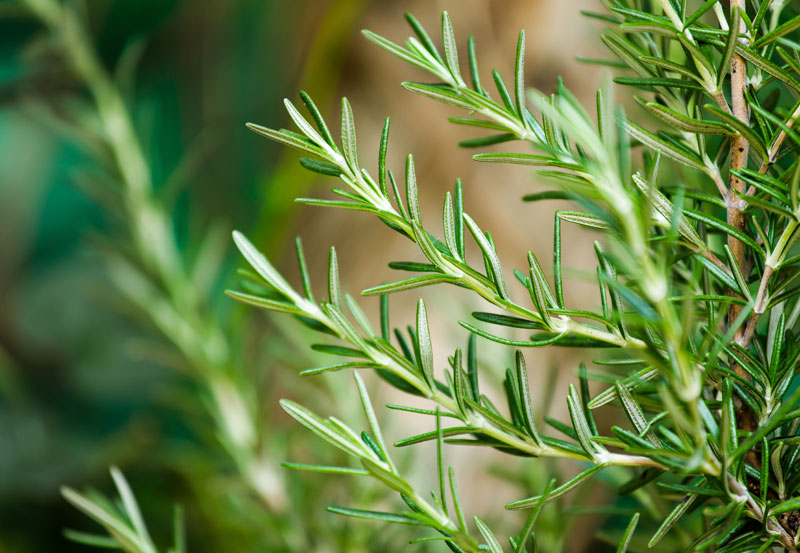
A humble and often overlooked herb, Plantago major, or plantain, has been gaining more time in the spotlight these days. Phenolic chemicals have been found to be the most active compounds within this medicinal herb. Its properties include antibacterial, anti-inflammatory, wound-healing, antiviral, and antifungal benefits. Human studies have also shown that the polysaccharides from Plantago major could stimulate the activity and growth of gut microbiota.39 There is scientific support for its use as a prebiotic due to P. ovata, also known as psyllium.39 Not only has this been a traditional herbal to treat IBD, but it has been shown to improve overall intestinal health. Future research is needed; however, the initial findings seem quite promising. One study demonstrated that the combination of Plantago major and Aloe vera enhances wound healing by promoting fibroblast proliferation, collagen bundle synthesis, and re-vascularization in skin injuries.1
As a conventional Chinese medicine, Smilax spp, or Sarsaparilla, has been used to treat inflammation. New research has proven that it can improve the differentiation of the gut’s tight junction proteins, thereby increasing the production of mucin in the gut epithelial layer, making it a valuable consideration in the treatment of inflammatory bowel disease.23 Additionally, Smilax has been found to increase the production of probiotic bacteria. In recent research, Smilax china root extract has been shown to have strong antimicrobial activity against two Cutibacterium acnes strains.18 More specifically, quercetin, resveratrol, and oxyresveratrol were amongst the most effective compounds against these particular strains.12
In conclusion, integrating botanical herbs into naturopathic and wellness practices offers a promising and natural approach to healing conditions within the gut-brain-skin axis.
 Meet Our Contributor:
Meet Our Contributor:
Kristin Robinson is a naturopathic doctor in Mesa, AZ with a primary focus on botanical medicine, nutrition, and homeopathy. A Boston native, she grew up with naturopathic medicine. This exposure at a young age has instilled and inspired a love of nature and plant medicine that she still holds to this day. She is working towards becoming a Registered Herbalist with the AHG. She can be found at: https://www.newearthnat.com/
References:
- Ashkani-Esfahani S, Khoshneviszadeh M, Noorafshan A, Miri R, Rafiee S, Hemyari K, Kardeh S, Koohi Hosseinabadi O, Fani D, Faridi E. The Healing Effect of Plantago Major and Aloe Vera Mixture in Excisional Full Thickness Skin Wounds: Stereological Study. World J Plast Surg. 2019 Jan;8(1):51-57. doi: 10.29252/wjps.8.1.51.. PMID: 30873362; PMCID: PMC6409144.
- Baxter NT, Schmidt AW, Venkataraman A, Kim KS, Waldron C, Schmidt TM. Dynamics of Human Gut Microbiota and Short-Chain Fatty Acids in Response to Dietary Interventions with Three Fermentable Fibers. mBio. 2019 Jan 29;10(1):e02566-18. doi: 10.1128/mBio.02566-18. PMID: 30696735; PMCID: PMC6355990.
- Bowe W, Patel NB, Logan AC. Acne vulgaris, probiotics and the gut–brain–skin axis: from anecdote to translational medicine. Benef Microbes. 2014;5(2):185–199.
- Bowe WP, Logan AC. Acne vulgaris, probiotics and the gut–brain–skin axis—back to the future? Gut Pathog. 2011;3(1):1.
- Farabegoli F, Santaclara FJ, Costas D, Alonso M, Abril AG, Espiñeira M, Ortea I, Costas C. Exploring the Anti-Inflammatory Effect of Inulin by Integrating Transcriptomic and Proteomic Analyses in a Murine Macrophage Cell Model. Nutrients. 2023 Feb 8;15(4):859. doi: 10.3390/nu15040859. PMID: 36839217; PMCID: PMC9965215.
- Felger JC, Lotrich FE. Inflammatory cytokines in depression: neurobiological mechanisms and therapeutic implications. Neuroscience. 2013 Aug 29;246:199-229. doi: 10.1016/j.neuroscience.2013.04.060. Epub 2013 May 3. PMID: 23644052; PMCID: PMC3741070.
- Geng J., Dong J., Ni H., Lee M.S., Wu T., Jiang K., Wang G., Zhou A.L., Malouf R. Ginseng for cognition. Cochrane Database Syst. Rev. 2010;12:CD007769. doi: 10.1002/14651858.CD007769.pub2.
- Gohil KJ, Patel JA, Gajjar AK. Pharmacological Review on Centella asiatica: A Potential Herbal Cure-all. Indian J Pharm Sci. 2010 Sep;72(5):546-56. doi: 10.4103/0250-474X.78519. PMID: 21694984; PMCID: PMC3116297.
- Guo Y, Xie J, Li X, Yuan Y, Zhang L, Hu W, Luo H, Yu H, Zhang R. Antidepressant Effects of Rosemary Extracts Associate With Anti-inflammatory Effect and Rebalance of Gut Microbiota. Front Pharmacol. 2018 Oct 2;9:1126. doi: 10.3389/fphar.2018.01126. PMID: 30364169; PMCID: PMC6192164.
- Guo HH, Shen HR, Tang MZ, Sheng N, Ding X, Lin Y, Zhang JL, Jiang JD, Gao TL, Wang LL, Han YX. Microbiota-derived short-chain fatty acids mediate the effects of dengzhan shengmai in ameliorating cerebral ischemia via the gut-brain axis. J Ethnopharmacol. 2023 Apr 24;306:116158. doi: 10.1016/j.jep.2023.116158. Epub 2023 Jan 11. PMID: 36638854.
- Hou JH, Shin H, Shin H, Kil Y, Yang DH, Park MK, Lee W, Seong JY, Lee SH, Cho HS, Yuk SH, Lee KY. Influence of Panax ginseng formulation on skin microbiota: A randomized, split face comparative clinical study. J Ginseng Res. 2022 Mar;46(2):296-303. doi: 10.1016/j.jgr.2021.12.002. Epub 2021 Dec 14. PMID: 35509819; PMCID: PMC9058842.
- Joo JH, Han MH, Kim JI, Kim JE, Jung KH, Oh HS, Chung YS, An HJ, Lee JD, Moon GS, Lee HY. Antimicrobial Activity of Smilax china L. Root Extracts against the Acne-Causing Bacterium, Cutibacterium acnes, and Its Active Compounds. Molecules. 2022 Nov 29;27(23):8331. doi: 10.3390/molecules27238331. PMID: 36500424; PMCID: PMC9736125.
- Kang M, Jung JH, Kim JY, Hong SH, Her Y. Therapeutic and Preventive Effect of Orally Administered Prebiotics on Atopic Dermatitis in a Mouse Model. Allergy Asthma Immunol Res. 2023 May;15(3):303-315. doi: 10.4168/aair.2023.15.3.303. Epub 2023 Jan 17. PMID: 37075794; PMCID: PMC10186118.
- Kopustinskiene DM, Bernatoniene J. Antioxidant Effects of Schisandra chinensis Fruits and Their Active Constituents. Antioxidants (Basel). 2021 Apr 18;10(4):620. doi: 10.3390/antiox10040620. PMID: 33919588; PMCID: PMC8073495.
- Lee Y, Choi HK, N’deh KPU, Choi YJ, Fan M, Kim EK, Chung KH, An AJH. Inhibitory Effect of Centella asiatica Extract on DNCB-Induced Atopic Dermatitis in HaCaT Cells and BALB/c Mice. Nutrients. 2020 Feb 5;12(2):411. doi: 10.3390/nu12020411. PMID: 32033291; PMCID: PMC7071208.
- Long-Smith C., O’Riordan K.J., Clarke G., Stanton C., Dinan T.G., Cryan J.F. Microbiota-Gut-Brain Axis: New Therapeutic Opportunities. Annu. Rev. Pharmacol. Toxicol. 2020;60:477–502. doi: 10.1146/annurev-pharmtox-010919-023628.
- Li Pomi F, Papa V, Borgia F, Vaccaro M, Allegra A, Cicero N, Gangemi S. Rosmarinus officinalis and Skin: Antioxidant Activity and Possible Therapeutical Role in Cutaneous Diseases. Antioxidants (Basel). 2023 Mar 9;12(3):680. doi: 10.3390/antiox12030680. PMID: 36978928; PMCID: PMC10045493.
- Li X, Chu L, Liu S, Zhang W, Lin L, Zheng G. Smilax china L. flavonoid alleviates HFHS-induced inflammation by regulating the gut-liver axis in mice. Phytomedicine. 2022 Jan;95:153728. doi: 10.1016/j.phymed.2021.153728. Epub 2021 Sep 5. PMID: 34561124.
- Liu XX, Chen CY, Li L, Guo MM, He YF, Meng H, Dong YM, Xiao PG, Yi F. Bibliometric Study of Adaptogens in Dermatology: Pharmacophylogeny, Phytochemistry, and Pharmacological Mechanisms. Drug Des Devel Ther. 2023 Feb 6;17:341-361. doi: 10.2147/DDDT.S395256. PMID: 36776447; PMCID: PMC9912821.
- Najjar S., Pahlajani S., De Sanctis V., Stern J.N.H., Najjar A., Chong D. Neurovascular Unit Dysfunction and Blood-Brain Barrier Hyperpermeability Contribute to Schizophrenia Neurobiology: A Theoretical Integration of Clinical and Experimental Evidence. Front. Psychiatry. 2017;8:83. doi: 10.3389/fpsyt.2017.00083
- Ossoukhova A., Owen L., Savage K., Meyer M., Ibarra A., Roller M., Pipingas A., Wesnes K., Scholey A. Improved working memory performance following administration of a single dose of American ginseng (Panax quinquefolius L.) to healthy middle-age adults. Hum. Psychopharmacol. 2015;30:108–122. doi: 10.1002/hup.2463.
- OuYang Q, Pan Y, Luo H, Xuan C, Liu J, Liu J. MAD ointment ameliorates Imiquimod-induced psoriasiform dermatitis by inhibiting the IL-23/IL-17 axis in mice. Int Immunopharmacol. 2016 Oct;39:369-376. doi: 10.1016/j.intimp.2016.08.013. Epub 2016 Aug 17. PMID: 27540765.
- Pan X, Wang H, Zheng Z, Huang X, Yang L, Liu J, Wang K, Zhang Y. Pectic polysaccharide from Smilax china L. ameliorated ulcerative colitis by inhibiting the galectin-3/NLRP3 inflammasome pathway. Carbohydr Polym. 2022 Feb 1;277:118864. doi: 10.1016/j.carbpol.2021.118864. Epub 2021 Nov 6. PMID: 34893269.
- Pandey A, Bani S, Dutt P, Satti NK, Suri KA, Qazi GN. Multifunctional neuroprotective effect of withanone, a compound from Withania somnifera roots in alleviating cognitive dysfunction. Cytokine. 2018;102:211–221. doi:10.1016/J.Cyto.2017.10.019
- Polkowska-Pruszyn ́ ska B, Gerkowicz A, Krasowska D. The gut microbiome alterations in allergic and inflammatory skin diseases—an update. J Eur Acad Dermatol Venereol. 2020;34(3):455–64.
- Pferschy-Wenzig EM, Pausan MR, Ardjomand-Woelkart K, Röck S, Ammar RM, Kelber O, Moissl-Eichinger C, Bauer R. Medicinal Plants and Their Impact on the Gut Microbiome in Mental Health: A Systematic Review. Nutrients. 2022 May 18;14(10):2111. doi: 10.3390/nu14102111. PMID: 35631252; PMCID: PMC9144835.
- Scholey A., Ossoukhova A., Owen L., Ibarra A., Pipingas A., He K., Roller M., Stough C. Effects of American ginseng (Panax quinquefolius) on neurocognitive function: An acute, randomised, double-blind, placebo-controlled, crossover study. Psychopharmacology. 2010;212:345–356. doi: 10.1007/s00213-010-1964-y.
- Sharma A., Lee H.-J. Ginsenoside Compound K: Insights into Recent Studies on Pharmacokinetics and Health-Promoting Activities. Biomolecules. 2020;10:1028. doi: 10.3390/biom10071028.
- Sluzewska A. Indicators of immune activation in depressed patients. Adv Exp Med Biol. 1999;461:59-73. doi: 10.1007/978-0-585-37970-8_4. PMID: 10442167.
- Skovierova H., Vidomanova E., Mahmood S., Sopkova J., Drgova A., Cervenova T., Halasova E., Lehotsky J. The Molecular and Cellular Effect of Homocysteine Metabolism Imbalance on Human Health. Int. J. Mol. Sci. 2016;17:1733. doi: 10.3390/ijms17101733.
- Son Y, Yang W, Park S, Yang J, Kim S, Lyu JH, Kim H. The Anti-Inflammatory and Skin Barrier Function Recovery Effects of Schisandra chinensis in Mice with Atopic Dermatitis. Medicina (Kaunas). 2023 Jul 24;59(7):1353. doi: 10.3390/medicina59071353. PMID: 37512164; PMCID: PMC10385087.
- Sowndhararajan K., Deepa P., Kim M., Park S.J., Kim S. An overview of neuroprotective and cognitive enhancement properties of lignans from Schisandra chinensis. Biomed. Pharmacother. 2018;97:958–968. doi: 10.1016/j.biopha.2017.10.145.
- Sun B, Wu L, Wu Y, Zhang C, Qin L, Hayashi M, Kudo M, Gao M, Liu T. Therapeutic Potential of Centella asiatica and Its Triterpenes: A Review. Front Pharmacol. 2020 Sep 4;11:568032. doi: 10.3389/fphar.2020.568032. PMID: 33013406; PMCID: PMC7498642.
- Sun Y., Chen S., Wei R., Xie X., Wang C., Fan S., Zhang X., Su J., Liu J., Jia W., et al. Metabolome and gut microbiota variation with long-term intake of Panax ginseng extracts on rats. Food Funct. 2018;9:3547–3556. doi: 10.1039/C8FO00025E.
- Szántó M, Dózsa A, Antal D, et al. Targeting the gut–skin axis—probiotics as new tools for skin disorder management? Exp Dermatol. 2019;28(11):1210–1218.
- Xie W., Meng X., Zhai Y., Zhou P., Ye T., Wang Z., Sun G., Sun X. Panax Notoginseng Saponins: A Review of Its Mechanisms of Antidepressant or Anxiolytic Effects and Network Analysis on Phytochemistry and Pharmacology. Molecules. 2018;23:940. doi: 10.3390/molecules23040940.
- Yan T, Wang N, Liu B, Wu B, Xiao F, He B, Jia Y. Schisandra chinensis ameliorates depressive-like behaviors by regulating microbiota-gut-brain axis via its anti-inflammation activity. Phytother Res. 2021 Jan;35(1):289-296. doi: 10.1002/ptr.6799. Epub 2020 Aug 5. PMID: 32761702.
- Yang Y, Ren C, Zhang Y, Wu X. Ginseng: An Nonnegligible Natural Remedy for Healthy Aging. Aging Dis. 2017 Dec 1;8(6):708-720. doi: 10.14336/AD.2017.0707. PMID: 29344412; PMCID: PMC5758347.
- Zhakipbekov K, Turgumbayeva A, Issayeva R, Kipchakbayeva A, Kadyrbayeva G, Tleubayeva M, Akhayeva T, Tastambek K, Sainova G, Serikbayeva E, Tolenova K, Makhatova B, Anarbayeva R, Shimirova Z, Tileuberdi Y. Antimicrobial and Other Biomedical Properties of Extracts from Plantago major, Plantaginaceae. Pharmaceuticals (Basel). 2023 Aug 1;16(8):1092. doi: 10.3390/ph16081092. PMID: 37631007; PMCID: PMC10458736.
- Zhao J, Nakamura N, Hattori M, Kuboyama T, Tohda C, Komatsu K. Withanolide derivatives from the roots of Withania somnifera and their neurite outgrowth activities. Chem Pharm Bull (Tokyo). 2002;50(6):760–765. doi:10.1248/Cpb.50.760.



